We’ve reached the season of pushing film; early nights begin to encroach, and rain clouds diffuse the day. This time last year I started to play with Delta 3200 for everyday use, which allowed me to shoot through the day and evening without worrying about compromises in low light.
I’ve always enjoyed night and low light photograph, but in film photography the difference between no-light and low-light becomes very worrying. Despite the capability to push film to ISO 8000 and beyond with useable results there will still always be that concern at the back of my mind that perhaps this time there really isn’t enough light to produce the results I’m after.
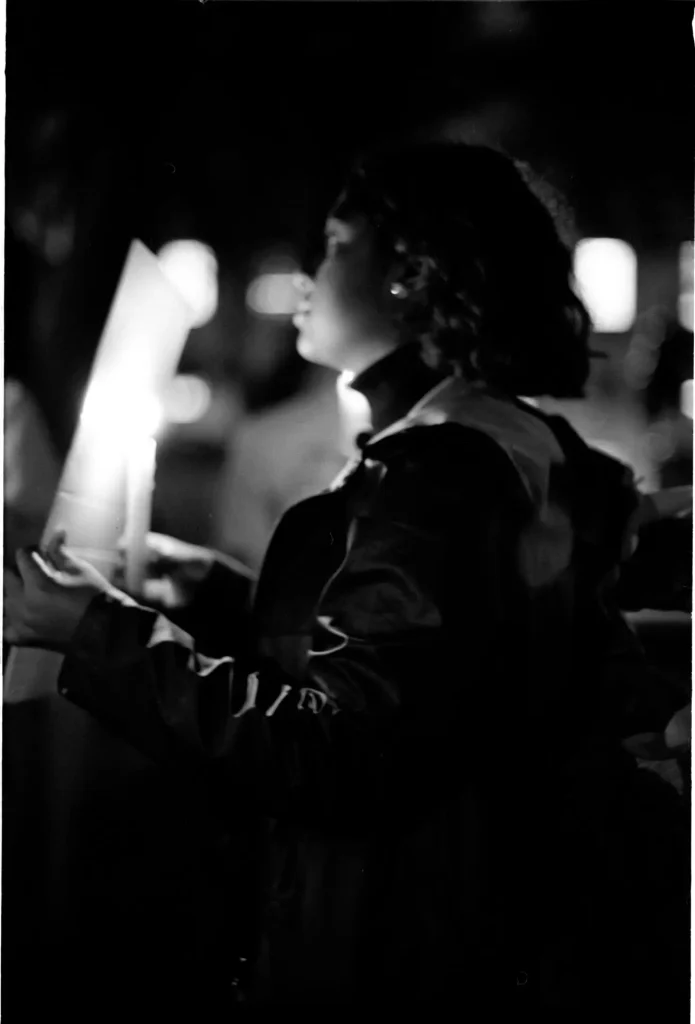
One evening in late September I found myself in a definite no-light situation, and had to handle it with the film I had loaded in the camera earlier that week; a roll of Ilford HP5+ which I had been shooting at 800 and intending to push accordingly. The situation was a candle lit vigil in the middle of Parliament Square – the nearest street lights were a few dozen meters away, and did not do anything to illuminate the circle of candles, or the people holding them.
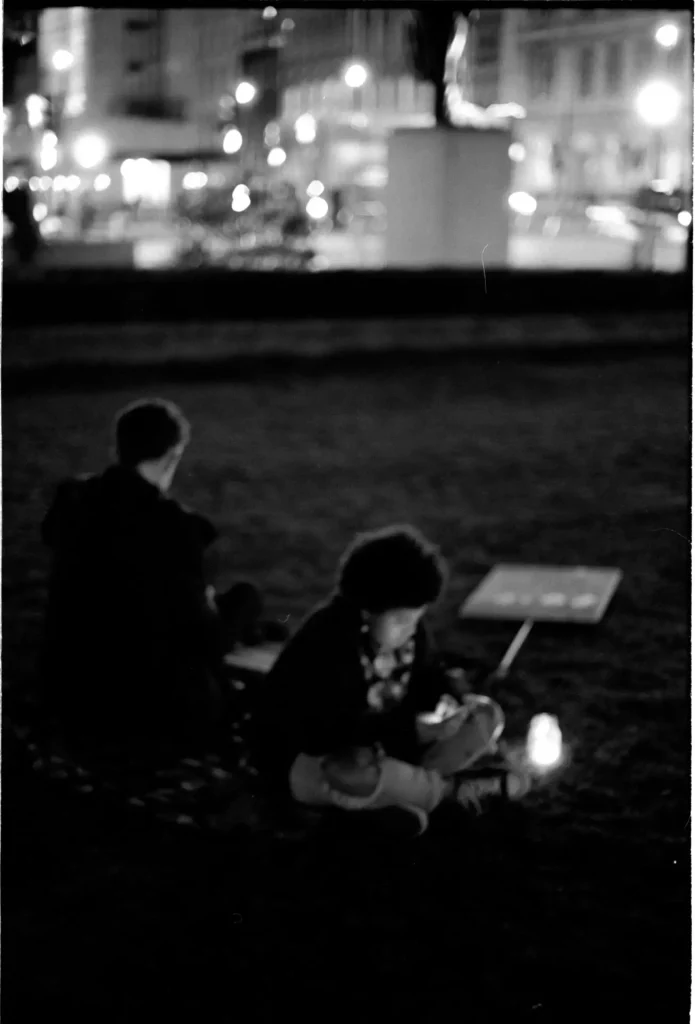
I was going to have to expose using only the candle light on peoples faces – which meant exposure times ranging from 0.5 to 2 seconds. I was shooting on my Nikon F4s with the 50mm 1.4D lens, which is a great all purpose setup.
The meter reading for the candlelight was actually around 15/ths to 30/ths but I didn’t want my images to just be slight points of light, I wanted a more even exposure, so I took a reading from the much darker ground as well and went with that, which is how I arrived at the longer exposure times.
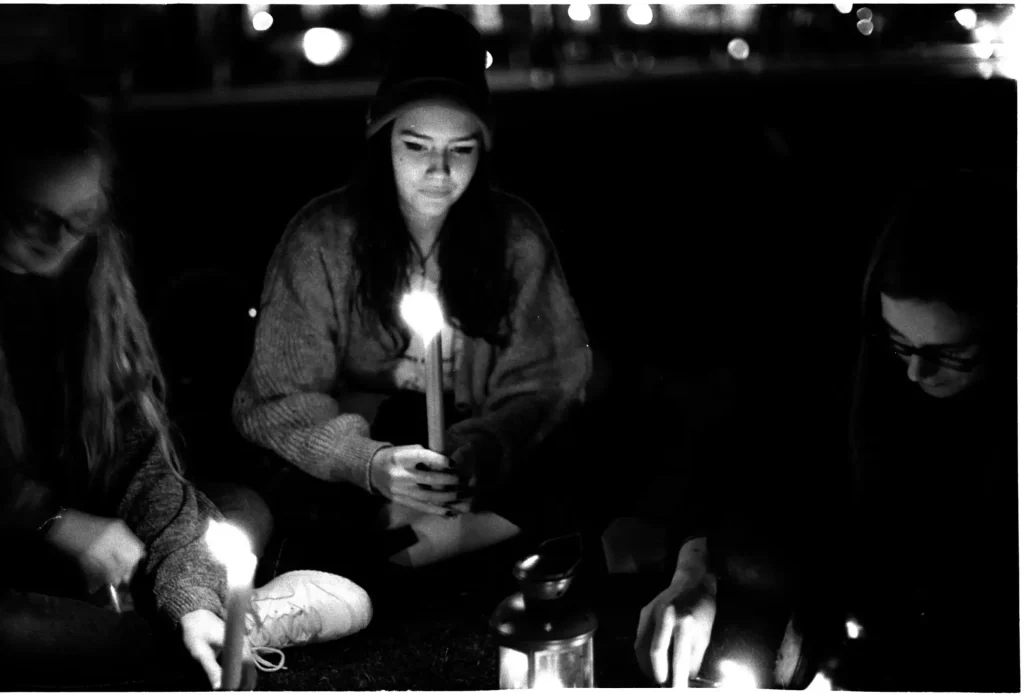
I was worried at first that the weight of the camera would mean potential hand-shake while shooting, but I actually found that the heavier equipment was easier to brace against myself. For a couple of shots I was sat down and used my shoe and knee for support for the longer exposure times, but the rest were handheld. The shutter on the F4 is very well dampened and I was surprised at how crisp the images turned out to be. I had to wait for moments between motion, to avoid long blurred figures – I was lucky that the majority of the vigil involved the participants sitting in quiet contemplation – very still and serene!
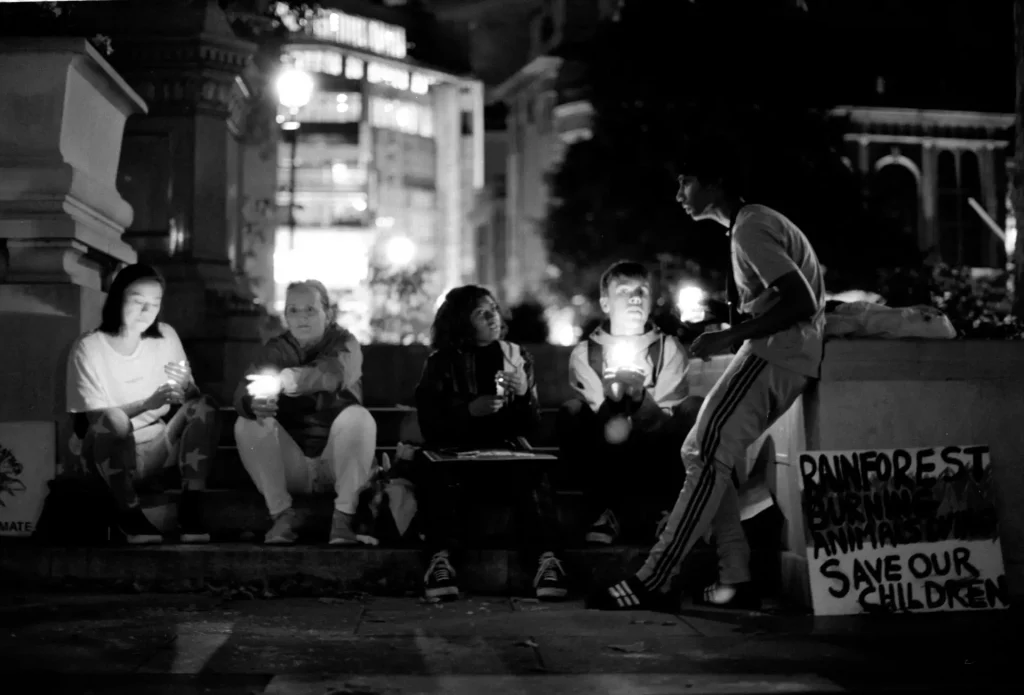
The lowest exposures I’m used to shooting on film are only a second long, which is the limit on my M6. Any longer than that would be on my M10, and would usually involve panning for motion/subject frozenness, so practicing these steady shots on this gear was a really new experience for me.
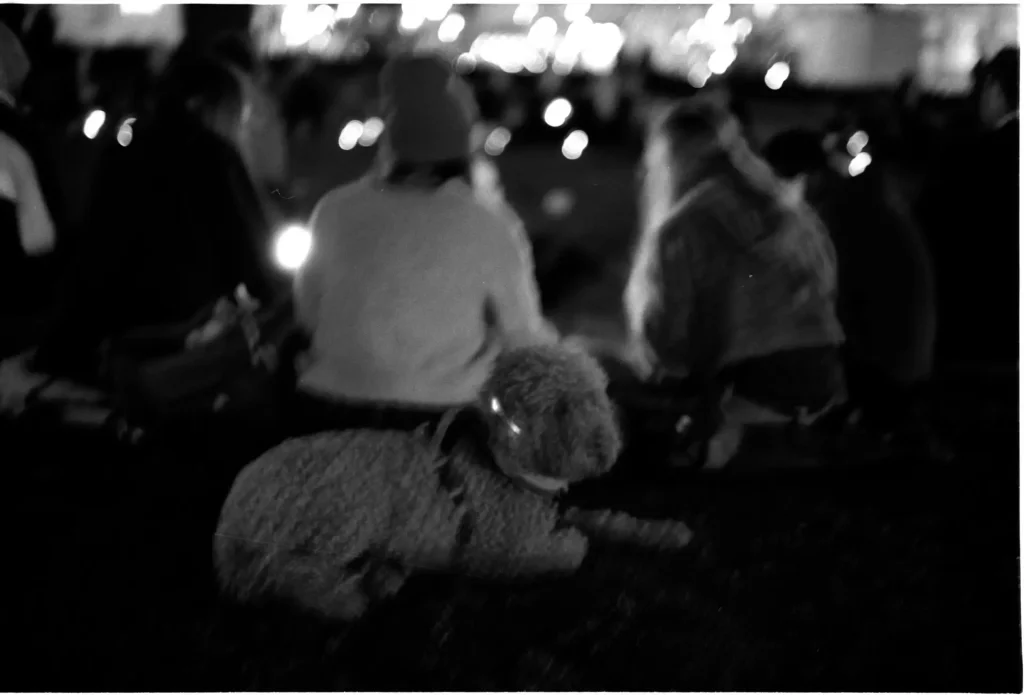
I reached my exposure times by metering for the candlelight as soon as I was able to, and then seeing the difference between that and the surrounding darkness. I didn’t want the images to be pure vignettes – darkness and then suddenly a flame, I wanted a more even exposure. This means that the candles themselves were overexposed by maybe three or four stops – but the rest of the frames themselves came out close enough what I was hoping for.
This was definitely my least favourite focusing experience of all time. Autofocus was out of the question, and there was no prism or assist beyond the arrows, which also seemed unreliable. I had to eye it and hope that I was close. I managed enough in focus that I can call it a success, but I would have definitely preferred a rangefinder.
Thanks for taking the time to read this article! You can find more of my work on my Instagram. I buy all of my film from Analogue Wonderland.
Share this post:
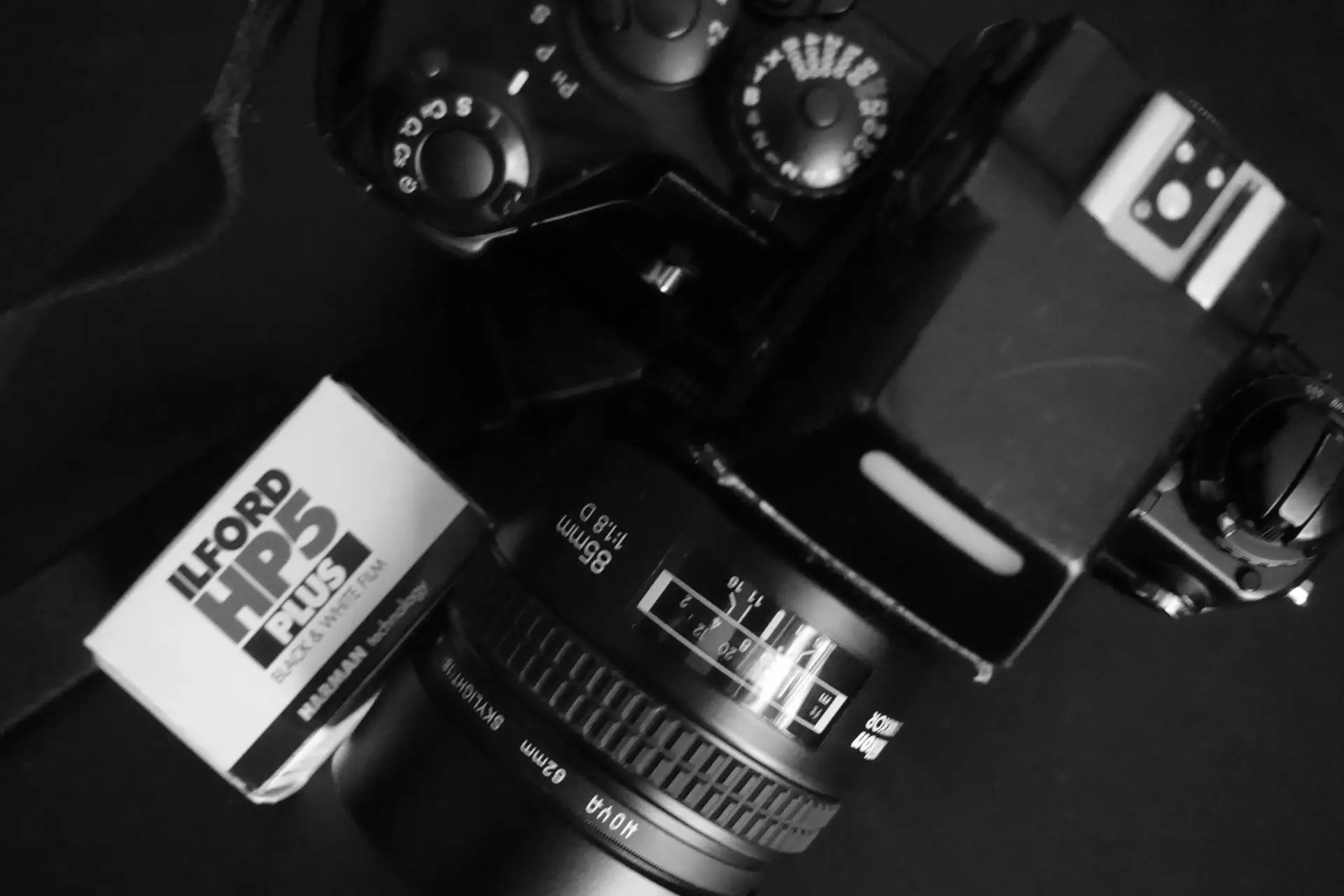
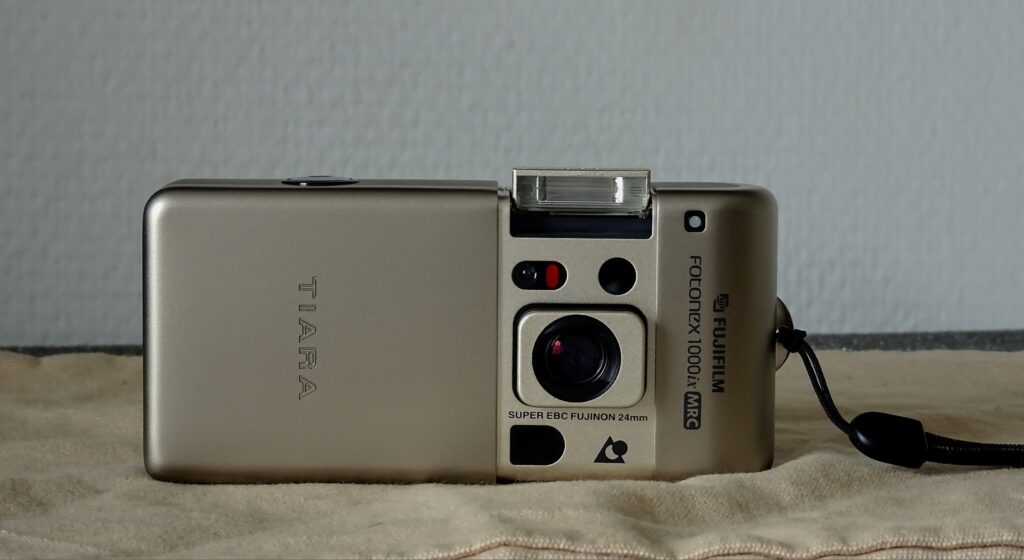

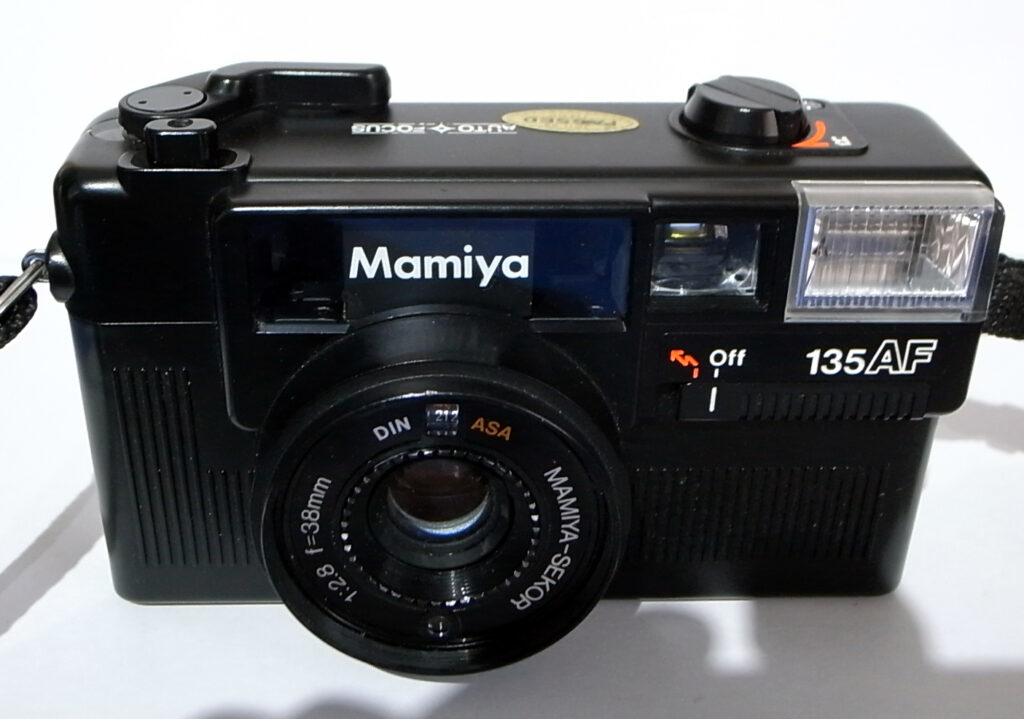
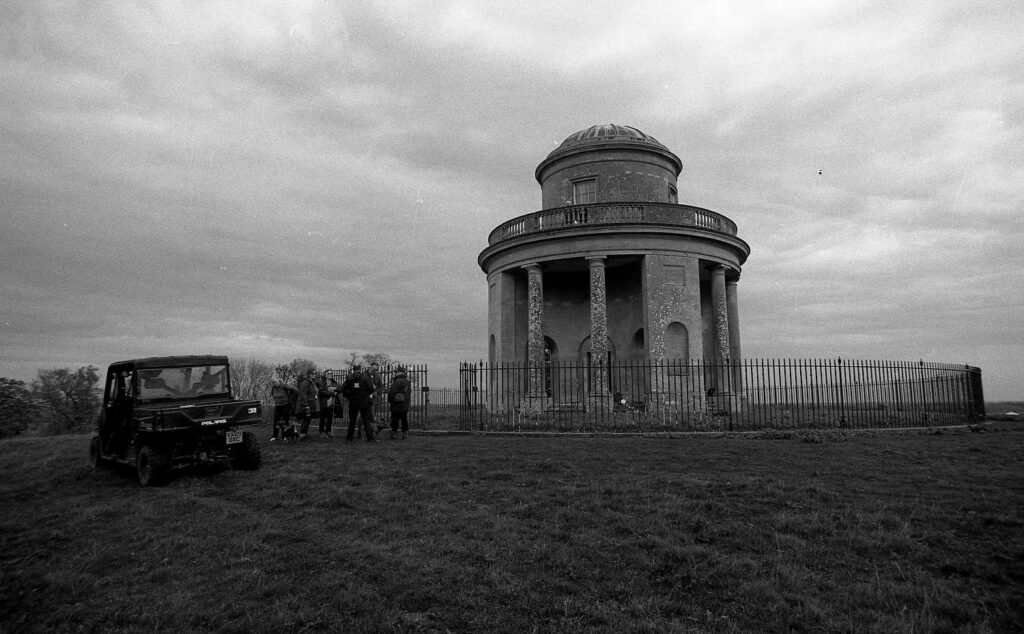




Comments
Ed on 5 Frames by Candlelight: 0.5-4s Exposures on Ilford HP5+ at EI 800 – by Simon King
Comment posted: 23/11/2019
I see but one image in focus (even your shot of the camera and film are not).
Comment posted: 23/11/2019
Tom P on 5 Frames by Candlelight: 0.5-4s Exposures on Ilford HP5+ at EI 800 – by Simon King
Comment posted: 24/08/2020
I'm always more interested in the images people produce than the kit they're using or the technical details. The point isn't to always have everything sharply in focus, perfectly exposed and recorded with clear precision.